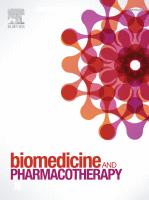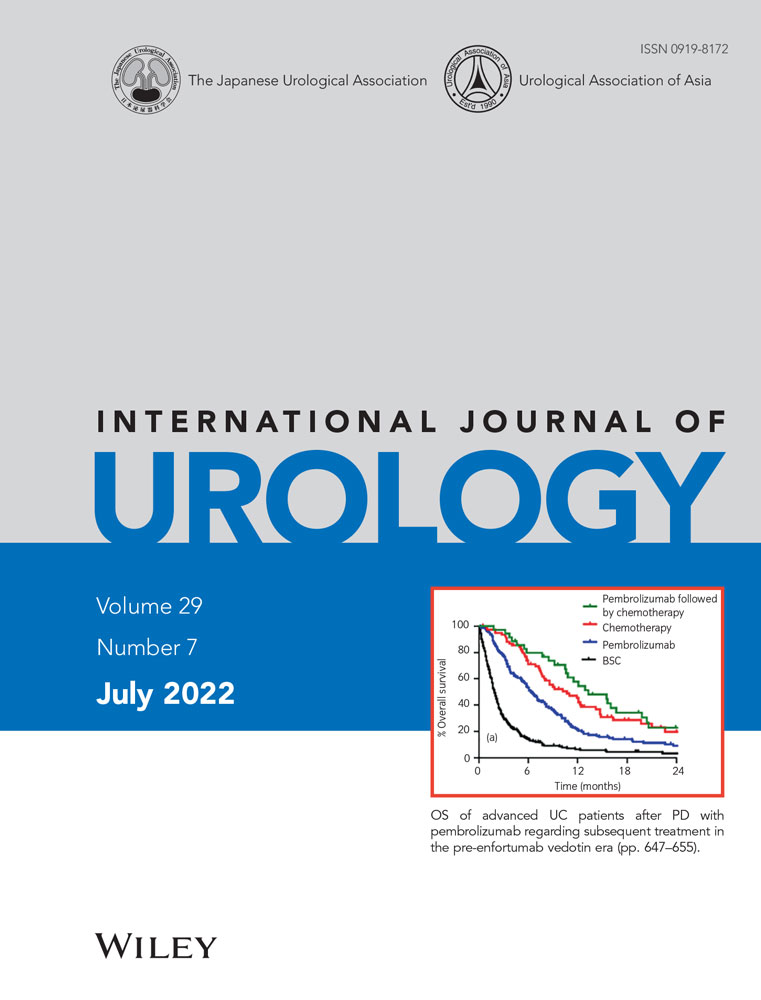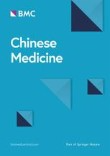Dan Shen
How to submit an article:
- Registered users can submit any published journal article that has a unique DOI (Digital Object Identifier) name or link to Research Hub.
- For example, you can paste the full DOI link:
https://doi.org/10.1109/5.771073or just the DOI name:10.1109/5.771073into the field above and click submit. - The person who is first to submit a valid article to Research Hub will forever be credited for it, and every article submission earns you +6 Research Points.
Also known as: Salvia Miltiorrhiza
Published research studies are articles that present the findings of original research that has undergone a peer-review process and has been made publicly available in scholarly journals, books or other media.

Fructus Lycii and Salvia miltiorrhiza Bunge extract attenuate oxidative stress-induced photoreceptor ferroptosis in retinitis pigmentosa
2023 Nov Biomedicine & Pharmacotherapy Yang Y, Wang Y, Deng Y, Lu J, Xiao L, Li J, et al.
Experimental Study Dan Shen Retinitis PigmentosaFructus Lycii and Salvia miltiorrhiza Bunge extract (FSE) shows potential as a clinical treatment for retinitis pigmentosa by inhibiting photoreceptor cell death following oxidative stress.

Astragalus propinquus schischkin and Salvia miltiorrhiza bunge promote angiogenesis to treat myocardial ischemia via Ang-1/Tie-2/FAK pathway
2023 Jan 09 Frontiers in Pharmacology Zhang MX, Huang XY, Song Y, Xu WL, Li YL, Li C
Astragalus propinquus Schischkin (Huang Qi) and Salvia miltiorrhiza Bunge (Dan Shen) (AS) can treat myocardial ischemia (MI) by protecting cardiac function, attenuating cardiac pathological changes, and hindering the progression of heart failure, which is related to angiogenesis after pericyte recruitment.
Network Pharmacology Dan Shen Myocardial ischemia (MI) Huang Qi
Traditional Chinese Medicine in the Treatment of Chronic Kidney Diseases: Theories, Applications, and Mechanisms
2022 Jul 18 Frontiers in Pharmacology Yunlai Wang, Ye Feng, Manman Li, Mo Yang, Gaoxiang Shi, Zihua Xuan, et al.
Review Article Huang Qi San Qi Dang Gui Qu Feng Tong Luo Recipe Dan Shen Zhen Wu Decoction Fu LingVarious traditional Chinese medicine treatment strategies could potentially provide an effective alternative in slowing the progression of Chronic Kidney Disease.

Effects of Chinese herbal medicine in patients with benign prostatic hyperplasia: A nationwide cohort study in Taiwan
2022 Mar 14 International Journal of Urology Ou SC, Huang ST, Lin MC, Chen WC, Huang CP, Lin HJ
Cohort Study Dan Shen Benign Prostatic HyperplasiaChinese herbal medicine can significantly reduce the risks of complications and need for surgery associated with benign prostatic hyperplasia.

New Insights Into the Effects of Individual Chinese Herbal Medicines on Chronic Kidney Disease
2021 Nov 04 Frontiers in Pharmacology Shao M, Ye C, Bayliss G, Zhuang S
Review Article Dan Shen Lei Gong Teng Huang KuiChinese herbal medicines could alleviate chronic kidney disease symptoms by combating fibrosis, inflammation, oxidative stress, and encouraging repair and regeneration.
Research insights are moderated by the Research Hub team and offer an at-a-glance overview of interesting research findings.

2023 Biomedicine & Pharmacotherapy
Fructus Lycii and Salvia miltiorrhiza Bunge extract (FSE) shows potential as a clinical treatment for retinitis pigmentosa by inhibiting photoreceptor cell death following oxidative stress.
Experimental Study Retinitis Pigmentosa
Fructus Lycii and Salvia miltiorrhiza Bunge extract attenuate oxidative stress-induced photoreceptor ferroptosis in retinitis pigmentosa
Yang Y, Wang Y, Deng Y, Lu J, Xiao L, Li J, et al.

2022 Frontiers in Pharmacology
Various traditional Chinese medicine treatment strategies could potentially provide an effective alternative in slowing the progression of Chronic Kidney Disease.
Review Article Dang Gui Fu Ling Huang Qi Qu Feng Tong Luo Recipe San Qi
Traditional Chinese Medicine in the Treatment of Chronic Kidney Diseases: Theories, Applications, and Mechanisms
Yunlai Wang, Ye Feng, Manman Li, Mo Yang, Gaoxiang Shi, Zihua Xuan, et al.

2022 International Journal of Urology
Chinese herbal medicine can significantly reduce the risks of complications and need for surgery associated with benign prostatic hyperplasia.
Cohort Study Benign Prostatic Hyperplasia
Effects of Chinese herbal medicine in patients with benign prostatic hyperplasia: A nationwide cohort study in Taiwan
Ou SC, Huang ST, Lin MC, Chen WC, Huang CP, Lin HJ

2021 Frontiers in Pharmacology
Chinese herbal medicines could alleviate chronic kidney disease symptoms by combating fibrosis, inflammation, oxidative stress, and encouraging repair and regeneration.
Review Article Huang Kui Lei Gong Teng
New Insights Into the Effects of Individual Chinese Herbal Medicines on Chronic Kidney Disease
Shao M, Ye C, Bayliss G, Zhuang S
Review Articles
Review articles summarise and critically evaluate the current state of research on a specific topic or field by synthesising multiple primary research studies.

Traditional Chinese Medicine in the Treatment of Chronic Kidney Diseases: Theories, Applications, and Mechanisms
2022 Jul 18 Frontiers in Pharmacology Yunlai Wang, Ye Feng, Manman Li, Mo Yang, Gaoxiang Shi, Zihua Xuan, et al.
Review Article Huang Qi San Qi Dang Gui Qu Feng Tong Luo Recipe Dan Shen Zhen Wu Decoction Fu LingVarious traditional Chinese medicine treatment strategies could potentially provide an effective alternative in slowing the progression of Chronic Kidney Disease.

New Insights Into the Effects of Individual Chinese Herbal Medicines on Chronic Kidney Disease
2021 Nov 04 Frontiers in Pharmacology Shao M, Ye C, Bayliss G, Zhuang S
Review Article Dan Shen Lei Gong Teng Huang KuiChinese herbal medicines could alleviate chronic kidney disease symptoms by combating fibrosis, inflammation, oxidative stress, and encouraging repair and regeneration.

Pharmacological effects of Salvia miltiorrhiza (Danshen) on cerebral infarction
2010 Jun 21 Chinese Medicine Lin, TH., Hsieh, CL.
Prevention and treatment of cerebral infarction by Danshen involves multiple pathways, including anti-atherosclerosis, anti-hypertension, anti-platelet aggregation, anti-inflammatory and anti-oxidative effects.
Review Article Dan ShenClinical Trials
Clinical trials are research studies that involve people and are conducted to evaluate the safety and efficacy of new treatments or interventions, such as drugs, medical devices, or behavioural therapies.
Study Protocols
Published study protocols are detailed plans that outline the objectives, methodology, statistical analyses, and organisation of a research study that have been made publicly available for others to review and use as a reference.
Presentation Slides

Experimental Study
Fructus Lycii and Salvia miltiorrhiza Bunge extract (FSE) shows potential as a clinical treatment for retinitis pigmentosa by inhibiting photoreceptor cell death following oxidative stress.
Yang Y, Wang Y, Deng Y, Lu J, Xiao L, Li J, Zhou Y, Nie F, Chen X, Peng J, Tan H, Qin Y, Peng Q

Review Article
Various traditional Chinese medicine treatment strategies could potentially provide an effective alternative in slowing the progression of Chronic Kidney Disease.
Yunlai Wang, Ye Feng, Manman Li, Mo Yang, Gaoxiang Shi, Zihua Xuan, Dengke Yin, Fan Xu

Cohort Study
Chinese herbal medicine can significantly reduce the risks of complications and need for surgery associated with benign prostatic hyperplasia.
Ou SC, Huang ST, Lin MC, Chen WC, Huang CP, Lin HJ

Review Article
Chinese herbal medicines could alleviate chronic kidney disease symptoms by combating fibrosis, inflammation, oxidative stress, and encouraging repair and regeneration.
Shao M, Ye C, Bayliss G, Zhuang S
Executive Summary
Write an executive summary in the form of a blog article on the topic of "Research into Chinese medicine treatment for Dan Shen" summarising the research below and using language that can be easily understood by patients and avoiding medical jargon using a professional and caring tone of voice.
Write an executive summary in the form of a blog article on the topic of "Researched Chinese medicine treatments for Dan Shen" summarising the research below in an objective and easy to understand way, and using language that can be easily understood by patients. Group the article into Chinese medicine treatments first, followed by nutrition and other treatments. Avoid using medical jargon and use a professional and caring tone of voice.
Write me a concise but easy to understand executive summary on the topic of "Chinese medicine treatments for Dan Shen" based on the following research that I will give you. Your summary should be 2 paragraphs long in Australian English spelling and include references to the studies.
A Experimental Study published in 2023 in the journal Biomedicine & Pharmacotherapy found that Fructus Lycii and Salvia miltiorrhiza Bunge extract (FSE) shows potential as a clinical treatment for retinitis pigmentosa by inhibiting photoreceptor cell death following oxidative stress. The study utilized hydrogen peroxide to induce oxidative stress in 661 W cells, which were examined with flow cytometry and an enzyme-linked immunosorbent assay. The impact of this oxidative stress on the cells’ mitochondria was observed using an electron microscope to understand the nature of cell death. The study also analyzed the compensatory effect of the Fructus Lycii and Salvia miltiorrhiza Bunge extract on the retinal structure and function of rd10 mice using histopathological examination, fundus photographs, and electroretinography. Protein levels were evaluated using Western blot assays, specifically targeting proteins including Tumor Protein p53, Solute Carrier Family 7 Member 11, Glutathione peroxidase 4, Arachidonate-12-Lipoxygenase, and Dipeptidyl peptidase 4. The results showed that hydrogen peroxide-induced oxidative stress in 661 W cells increased oxidative stress products and certain protein expressions, while decreasing others. Notably, the activation of Glutathione peroxidase 4 did not lessen reactive oxygen species generation and had little impact on cell death. The research discovered that both Ferrostatin-1 and the extract could lessen reactive oxygen species generation and inhibit cell death of photoreceptors in retinitis pigmentosa, achieving this by inhibiting the expression of one protein and increasing the expression of two others.
A Review Article published in 2022 in the journal Frontiers in Pharmacology found that Various traditional Chinese medicine treatment strategies could potentially provide an effective alternative in slowing the progression of Chronic Kidney Disease. The study explores the use of Traditional Chinese Medicine (TCM) and various Chinese materia medica (CMM) to manage Chronic Kidney Disease (CKD). The review delves deeper into the principles and treatment approaches of TCM in battling CKD, dictating that the disease's nature is deficient in the root and excessive in the branches, where deficiency and excess persist simultaneously throughout the condition. The main strategies employed by TCM in the treatment of CKD include invigorating Qi, tonifying kidneys, promoting blood circulation, removing stasis, eliminating heat and dampness, reducing turbidity, and controlling edema. The discussion highlights the effectiveness of several CMMs in treating CKD, which are undergirded by clinical evidence or experimental studies. Notably, it points out a correlation between the macroscopic view of TCM and the microscopic view of modern medicine. These TCM and CMM strategies are hailed for their multi-targeted and multi-functional characteristics, potentially providing an effective alternative treatment approach for CKD.
A Cohort Study published in 2022 in the journal International Journal of Urology found that Chinese herbal medicine can significantly reduce the risks of complications and need for surgery associated with benign prostatic hyperplasia. The methodology of the retrospective cohort study involved analyzing data from Taiwan's National Health Insurance Research Database, covering the period between 2001 to 2013. 4142 patients newly diagnosed as having benign prostatic hyperplasia were divided into Chinese herbal medicine users and non-users. To compare these groups, they employed 1:1 propensity score matching, and the risk of complications related to benign prostatic hyperplasia was evaluated using the Cox proportional hazard model. The results showed that during the study period, the risk of complications related to benign prostatic hyperplasia was considerably lower in the Chinese herbal medicine group compared to the non-Chinese herbal medicine group, even when other variables were controlled for. The Chinese herbal medicine users had a significantly lower risk of urinary tract infection and urine retention. Plus, the Chinese herbal medicine users experienced a lower incidence rate of surgery related to benign prostatic hyperplasia and enjoyed a longer surgery-free interval than non-Chinese herbal medicine users. Among the Chinese herbal medicine, Salviae miltiorrhizae and Ji-Sheng-Shen-Qi-Wan were prescribed the most by traditional Chinese medicine practitioners.
A Review Article published in 2021 in the journal Frontiers in Pharmacology found that Chinese herbal medicines could alleviate chronic kidney disease symptoms by combating fibrosis, inflammation, oxidative stress, and encouraging repair and regeneration. The study's methodology consisted of both clinical and experimental approaches. It started with an examination of an array of traditional Chinese herbs. The criteria for considered herbs were their clinical efficacy, frequency of use in treating chronic renal disease, and a well-studied mechanism of action. Five herbs, namely, Tanshinone II A, Salvianolic acid A & B, Triptolide, Tripterygium glycosides and a monomer from Kudzu root, made the cut after having met the set criteria. The results showed that these Chinese herbs were found to possess pharmaceutical properties that were effective against fibrosis, inflammation, and oxidative stress. Furthermore, these also showed the potential to promote renal repair and regeneration, which are fundamental for treating chronic kidney disease. These findings suggest a broader scope of therapeutic treatments that could benefit the patients in a more natural and potentially less invasive way.
Moderation Tools
Topic
Sign In
Users not signed in are limited to viewing the 5 most recent items of content.